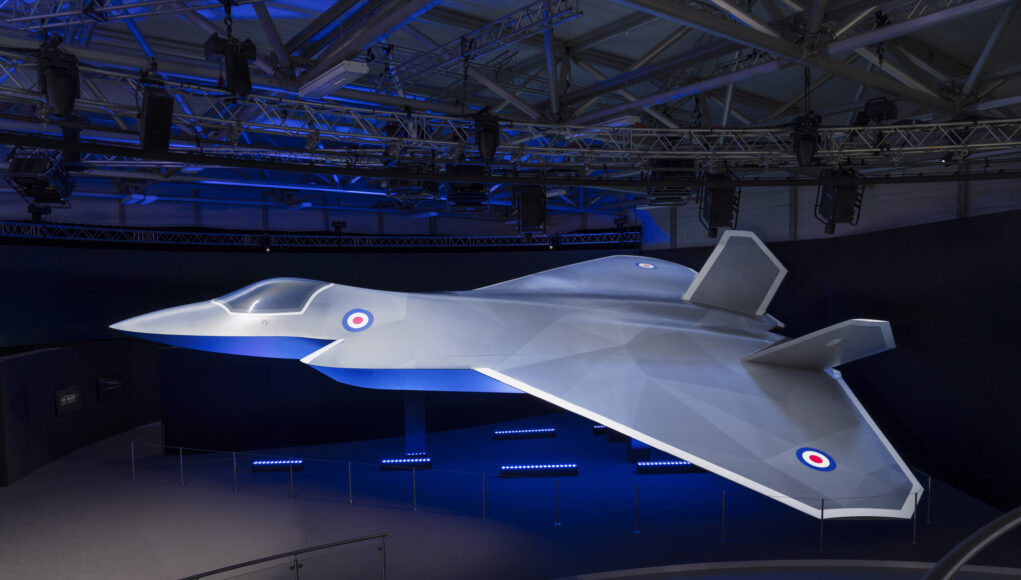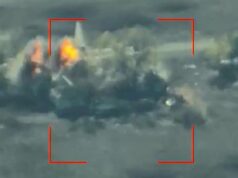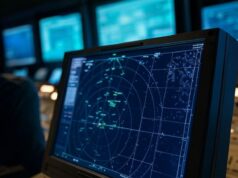The UK Government has reaffirmed its commitment to the Global Combat Air Programme (GCAP), ensuring the development of its next-generation stealth jet remains on track despite ongoing defence reviews.
A Defence Committee session revealed the UK Government’s steadfast commitment to the Global Combat Air Programme (GCAP), a key trilateral initiative with Italy and Japan aimed at developing next-generation air combat capabilities.
Defence Secretary John Healey reassured the Committee of the Government’s dedication to the programme, stating, “We are committed to it. It is a really important programme.” He emphasised that maintaining momentum in GCAP has been a personal priority during his first four months in office.
Healey highlighted recent progress, including treaty advancements and organisational milestones: “I have had a number of meetings with my Italian and Japanese counterparts. The areas that I have been most concerned to maintain momentum in have been the completion and passage of the treaties through all three Parliaments… and maintaining the work with the three leading companies to set up a formal joint venture. I expect that to be in place before Christmas as well.”
These efforts, he added, form the “essential foundations” for the programme and demonstrate the Government’s commitment to its successful delivery.
Healey underscored the strategic importance of GCAP both as a response to emerging threats and as a pillar of the UK’s industrial base.
“It is fundamental to our industrial base in this country and to maintaining what has been for decades world-leading global air combat capability and technology in Britain,” he said.
Lieutenant General Sir Rob Magowan echoed this sentiment, stressing that GCAP will replace the Typhoon, ensuring continuity in the UK’s air combat capabilities. He noted that the “industrial hinterland is matched between Typhoon and GCAP, from British Aerospace to MBDA to Leonardo to Rolls-Royce.”
While GCAP is poised to come online in the late 2030s, Typhoon remains central to the UK’s air combat strategy. “We are retiring our tranche 1 Typhoons in 2027, but we are spending a significant amount of money to increase the capability of the tranche 2s and 3s, which will make them world-leading, even though they are fourth generation,” said General Magowan.
Healey also highlighted the Government’s efforts to secure international orders for Typhoon. “As it happens, I was in both Turkey and Saudi Arabia last week. The opportunity for those countries to take advantage of Typhoons was a significant part of our discussions,” he noted.
The Defence Secretary emphasised GCAP’s importance for addressing future challenges:
“Yes to the commitment; yes to the momentum; yes to the importance of this long term, to meet the emerging threats and technologies that we can see in the mid and late 2030s.”
At the UK Defence Journal, we aim to deliver accurate and timely news on defence matters. We rely on the support of readers like you to maintain our independence and high-quality journalism. Please consider making a one-off donation to help us continue our work. Click here to donate. Thank you for your support!














Just to add a bit of balance, I read MoD funding for just development over the next decade is 12.5 billion.
With all the industrial benefits, pity HMT does not recompense MoD.
How many personnel, ships, planes, helicopters, Tanks, SPG, GBAD for 12.5 billion? And if we end up with 50 to 100 planes? Worth it?
I assume you are asking is it worth it purely for the UK military rather than for HMT and the economy as a whole. What’s the alternative? More F-35s? SCAF? F/A-XX? How good do our future fighters need to be?
I’d hope £1.25 bn a year to boost UK defence tech research in areas such as engines, radars, comms, AI and sensor fusion wouldn’t only get used on the GCAP fighter, and would percolate through to the CCAs, Crowsnest replacements, maybe NATO next gen rotaries, etc. (If we don’t make stupid buying decisons.) That’s all speculation. It’s hard to argue that UK’s military alone gains over buying other countries’ 6th gen fighters, unless those are going to cost well over £200m a unit. We would still have enough left over to get our missiles of choice integrated. I think you have to figure in the non-military benefits to make it worthwhile.
12.5bn doesn’t seem remotely enough. The Eurofighter program cost 4x that it in the 90s/00s and there is no way that Tempest is going to be any simpler or cheaper to design and develop.
Plus what Japan and Italy spends.
Personally I think all departs should get a rebate on where there investment and costs have increased the tax take.. we always say dept xxx costs the taxpay xx amount of money, but never ever comment on how much of that immediately goes back into the tax take and that’s before you get the secondary benefits.
If you look at the likely cost of the wage bill for the army, navy and airforce it’s likely around 7 billion pounds of that the treasury will get employers NI, employee NI and income tax so in reality it’s probably getting a good 50% of that straight back 3.5 billion a year…then the service personal will pay vate on a good proportion of what they buy…ect..
It the same with equipment purchases..the ship builders will pay their taxes..infact you could assume a great deal of any money spent on UK employees or UK production goes back to the treasury. To my mind that money should be rebated back to the spending department.
That way we actually start to get a true understanding of what we are really spending..after all the NHS spends half its budget on staff..the NHS pays 50% of that money goes straight back to the treasury via NI and income tax deductions.. which is essentially 35billion a year that we pretend we pay out but immediately get back in year…
Or the other thing we could do is cut the middle man out and say government agencies and employees don’t pay income tax or NI..but their wages are reduced correspondingly.. the cost of running everything plummets ( the NHS at a swipe becomes 35billion cheaper) and we don’t spend all that money on processing and collecting those tax receipts..less Payroll staff to employ in the organisation and less staff in HMRC to process the payments…the hight of efficiency, personally I’ve always found it bonkers that up to 25% of the NHS budget is essentially in year recycled from the treasury back to the treasury via a bizarre route..treasury pays DOH, DOH pays NHSE, NHSE pays Commisioning organisations, commissioning organisations pays provider, provider pays staff and then also sends back 50% of wage bill to HMRC, HMRC then pay treasury…….
Thank you Jonathan. Your previous explanation was exactly what I had in mind when I made that remark, so thank you for detailing it again.
I hope influential people read it, and think, this man has a point.
I certainly agree that saving money by inccreasing the tax take needs to be credited to the department somehow. The current system favours imports for a start.
If you don’t pay income tax, you lose the progressive nature of contributions and allowances, but you can get around that by having “equivalent” salaries (also useful when moving job to non-government). Less radically, higher tax allowance/thresholds is something I’ve often thought we should give to service people.
As explained this is why domestic products are so important. You can either take that money and give it away to another countries economy or keep it in your own economy.
There does need to be some kind of rebate to make it more attractive to use U.K. companies
Hi Daniele,
I’m getting a bit puzzled over all these statements by our Defence Secretary. I was under the opinion that all is going to be revealed in the review next year. However, we are drip fed various students as above.. I’m more concerned about our immediate capability in the event we have to act hard and fast with what we have. And to increase the defence budget as of now, rather than these statements.
Cheers,
George
Given the need to secure Typhoon exports ASAP plus keep the Japanese inside I suspect these announcements could not wait for the completion of the defence review. In this instance I agree with preempting the review much the same as the did for SSN A under AUKUS
I suspect you are right Jim.
The Japanese and Italians will require a guarantee regarding GCAP this year.
The huge part of me sees these statements as talking tough on defence while doing the opposite.
The SDR will reveal.
As UKDJ know, I’m a hardened Labour sceptic and fully expecting some shocked posters next year, with a smaller part of me so, so hoping I get to eat my hat.
The first months have not encouraged me.
Statements not students
Statements not students as my mistake above.
We must be approaching the point at which combat aircraft reach development limits. Software will become ever more capable but airframes and propulsion won’t. The F16, F15, F18 show the trend to ever longer service lives.. F35 is expected to remain in service until 2070. So the next 6th generation Tempest could be operational until 2100 or even later.
In that context £12b in development costs isn’t excessive.
What worries me more is the intensive use we are making of a small number of Typhoons with no plans to buy more.
I am very sceptical of this project – and similar ones. The ultra expensive extra performance is for what if most of the edge is in missile performance?
These will be much more expensive than Typhoon so smaller numbers, its airbases will be vulnerable to ballistic missiles and drones. IRBM’s and ICBM with several warheads will be in every medium power arsenal ex.Iran and up in 10 years time if the trend is not stopped.
Better get a bunch of long range missiles and Airbus air launched ballistic bomb trucks, also add that launch capability to A-400’s. Many more extra satellites and recon assets for targeting.
It’s true that not much has happened since F35 development but there has been a massive wall since Typhoon and F2 in Japan were developed. In many ways Tempest is just catching up to faith Gen aircraft.
Tempest will be a real jump ahead.
F35 is still conventionally manufactured.
GCAP will use advanced bonding technology, instead of fixings and flush riveting and 3D printed assemblies, this should make it easier and quicker to make, theoretically anyway!
Without France or Germany involved, it will run a lot easier, with three equal partners, all bringing their expertise to to the table.
The problem with monocoque is maintenance access.
You still need panels and fittings at some level to be able to do engine changes etc.
“massive wall” ????
We should have a sovereign targeting capability at the least. It was clear that we’re completely reliant on the Americans for Storm Shadow for Ukraine. Given the direction of travel in the USA, we should re-evaluate how dependent we want to on the Americans (or any foreign power for that matter). Cheers.
Can anyone explain exactly what the Storm Shadow targeting dependence on the US is? Exactly what extra sovereign capability would we need to put in place to avoid that dependence? Also, is it correct to assume that the French have the same issue (dependence on USA for targeting capability) with SCALP?
Storm Shadow relies on classified US cartographic data (Terrain matching data) that is used to guide the missile to its target. This data is inserted prior to launch and is mission specific.
Fifth gen
Anyone know what the acquisition cost per aircraft will be?
I read a while ago that we are talking about £130/140 million each in todays terms but how accurate that is I have no idea.
I would think that’s about right Geoff….
Have they delegated the workshare yet?
Maybe safe from cuts to develop the thing, but they or a subsequent government may only buy 5 of them.
Given the uncertainty over the US airforce 6th Gen jet and the Navy stumbling along this is good news and my earlier skepticism has so far proven unfounded although there is still time for uk government to make the stupid decision. The export potential is enormous and the R&D spinoffs considerable.
We have the right partners who are focusing on the science and engineering rather than the politics.
Which is a refreshing change after the effing about by the Germans on Typhoon.
The desire to open the project up to new partners does make me a little nervous .
However it is a golden opportunity to wind up the Russians by including Ukraine as a partner.
US Navy 6th gen fighter “stumbling along” ????
Last I heard/read and I am happy to be corrected , it is a question of money with large portions of the Navy budget already allocated for big ticket items such as the Ford class carriers, Colombia class sub , destroyer replacement program and development work on the Virginia class replacement,
Whatever! 09:00 “The board have complete faith in the Manager.” 1300 “We have agreed to dispense with the manager’s services forthwith.” British history is littered with incredible aircraft projects way ahead of the competition of the time and most of them are in the museums to prove it. Talk is so cheap if you are a politico.
Boeing will lose fighter manufacturing when SuperHornet & F-15EX end in the next few years. While they have an FA-XX design, would they be trusted with it after 737Max , Starliner & the 777-9 delays? Offer Boeing to licence build GCAP/Tempest for the USAF & huge economies of scale come into view.
Boeing Commercial is a bit different to Defence and Space…
Starliner
I have to admit I did think the Government would can GCAP and through their hat in with Europe. I still suspect the lack.on commitment earlier was because that was what they wanted to do but looks like the previous government may have made it to difficult or toxic to exit. Bit like the carriers and Concorde